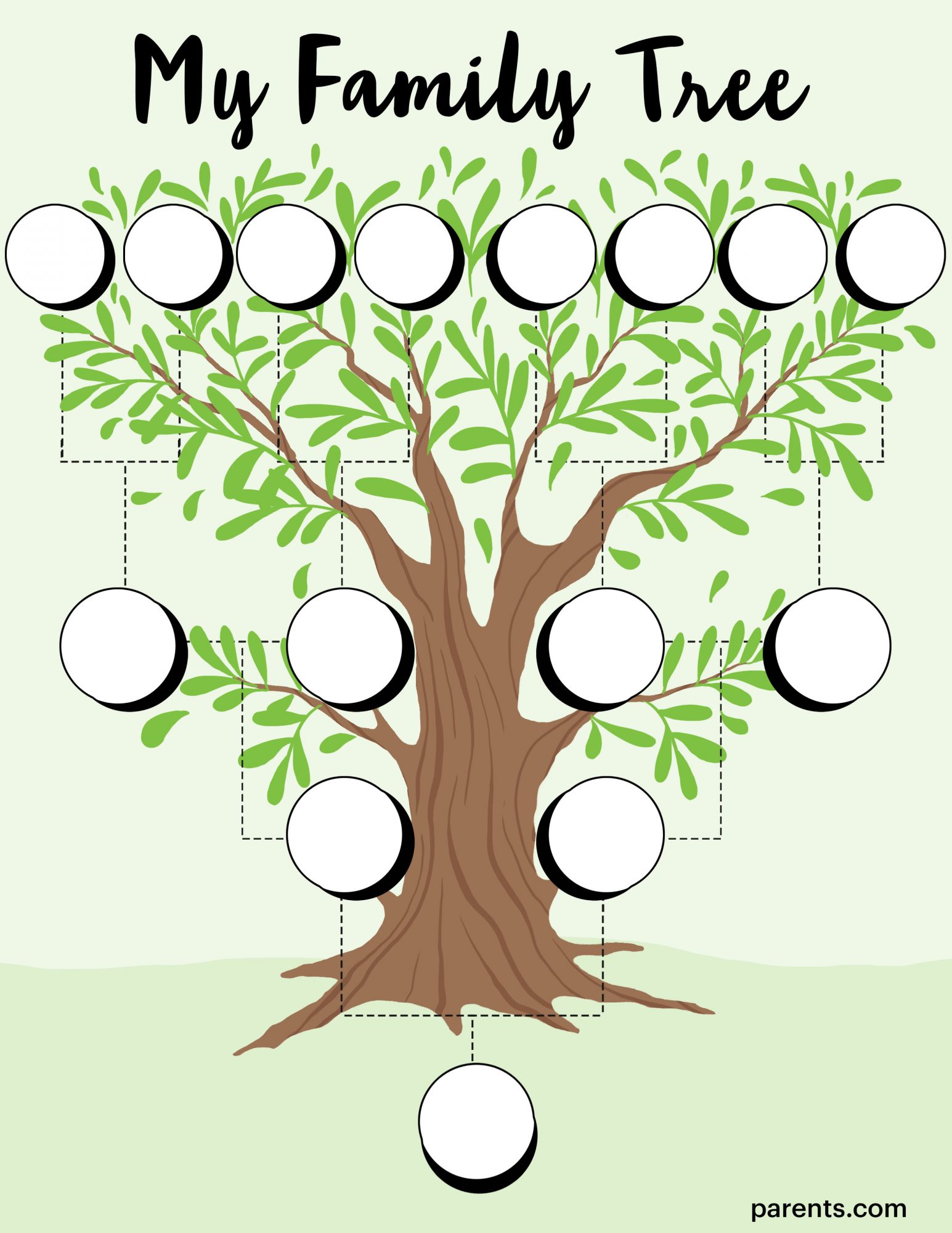
A family tree is a genealogical chart documenting a person's ancestry. The diagram represents generations of family members and their relationships to one another. Making a family tree has several benefits for kids—for example, it can help them build a core identity, develop an interest in history, and bond with relatives.
It's pretty easy to make your own family tree at home, so keep reading for a guide on tracing your family's roots. We also made a simple family tree template you can download at home.
Benefits of Family Trees for Kids
As it turns out, family trees are more than just a fun activity for a rainy afternoon. Making one has several benefits for kids, which are outlined below.
Family trees build a stronger self-identity. First and foremost, family trees encourage kids to build a core identity and discover their roots. They can learn, for example, that their great-grandmother was born in Ireland. This information helps them realize they're a part of something bigger than themselves, giving them a sense of belonging while opening their eyes to their own uniqueness.
Kids can develop an interest in history. Many young people find history boring, but it doesn't need to be! When kids learn about their roots and ancestors, they can personally connect to history in a unique way, making the subject more interesting and relevant. For example, if your child's great-great-grandfather was a soldier in World War II, the stories of the Battle of Normandy are suddenly of flesh and blood. In this way, family trees can bring history to life.
Family trees encourage children to bond with relatives. Through creating a family tree, kids may discover they have similar personalities and characteristics with their aunts, uncles, cousins, etc. Knowing how they fit into the chart will help them relate to their relatives, and it will also establish connections between them. Forming meaningful connections with others is a critical part of living a happier, fulfilling life.
They promote higher self-esteem. A study conducted at Emory University in 2010 found that the more children knew about their family history, the higher self-esteem they had.
Doing genealogical research sheds light on your family's medical history. A wide range of conditions and diseases— including different cancers, birth defects, heart and respiratory problems, and mental illnesses—can be passed down genetically. Making a family tree can provide valuable information about the health concerns that run in your family, helping children make informed decisions about their lifestyles.
Family trees make kids more empathetic and resilient. Learning about the terrible tragedies your ancestors encountered can give children courage to face their own challenges. It can also cultivate your child's compassion by providing context for their relatives' shortcomings, allowing them to be better human beings.
How to Make a Family Tree
There are no set rules on what to include in a family tree. It can be as simple or complicated as you want it to be. A simple family tree may include your child, you and your partner, their grandparents, and their great-grandparents. On the other hand, a complicated family tree chart might include your child, you and your partner, siblings, aunts, uncles, and cousins.
No matter what route you decide to go, the first step in making a family tree is compiling information about your genealogy. This means collecting family members' names, hometowns, careers, achievements, known locations, date of birth, and date of death (if applicable). You should add photos of each ancestor if you can, as that will help bring the family tree to life. If you're unsure about any details, ask other family members or visit libraries and genealogy sites to find documents that can trace and verify your heritage.
Next, create an outline of the family tree (or download our simple template provided below). Start by arranging your ancestors from oldest to youngest downwards, tracing all the way back to your child. Each family member will be represented by a shape—typically a box or rectangle. These shapes will then be connected by lines to represent relationships. Once you've done this, you can add in all the information you researched earlier.
Lastly, encourage your child to distribute their family tree to relatives. Some may want to add more information to each leaf or discuss and share new family stories.
Printable Family Tree Template
If you want to make your own family tree, consider downloading our simple template, which makes the process easier. Remember that the person creating the tree (your child) should be in the bottom box. Mom and Dad are one row above them, grandparents are two rows above them, and so on. If your child has siblings, you can add boxes parallel to their own box (they'll also be on the bottom row).

DOWNLOAD TEMPLATE HERE





